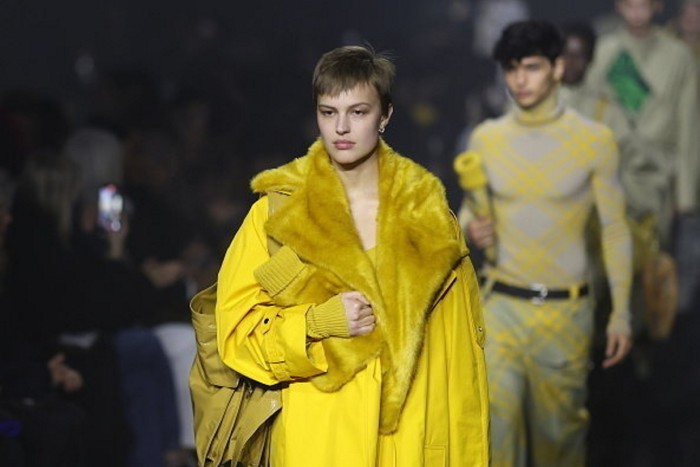
Daniel Lee’s Burberry debut swept through London Fashion Week like a breath of fresh air. The city is in need of a pick-me-up in the aftermath of Brexit, Covid and Liz Truss’s disastrous “mini” Budget — not to mention the ongoing public-sector strikes over pay.
Editors and buyers who usually skip London and head straight to Fashion Week in Milan appeared south of the Thames on Monday night, in London’s Kennington Park, to see whether Lee could restore the magic at Britain’s biggest and best-known luxury goods brand — and help the company achieve its goal of increasing revenues from £2.8bn to £4bn within five years.
It might not have been magic, exactly, but Lee did succeed in making Burberry worth watching again. He has been tasked by chief executive Jonathan Akeroyd, who joined Burberry from Versace last year, with emphasising Burberry’s “Britishness” as it seeks to recapture market share from European rivals such as Gucci, Prada and Moncler.
Lee did it not with the Mayfair-meets-Bloomsbury Englishness of former designer Christopher Bailey, who sat front row, but with enormous faux furs, clashing Burberry plaids and frayed kilts-over-trousers that evoked the look and spirit of early Vivienne Westwood and ’90s grunge. The decision to pitch a tent in Kennington, an area once known for its squatters, instead of returning to Bailey’s grand, orangery-style showspace in Hyde Park, spoke volumes.


The response on social media was “mixed”, according to Bernstein analyst Luca Solca. Department-store buyers were more upbeat, speaking warmly of the bags, outerwear and menswear. “He’s speaking more to [former chief creative officer Riccardo Tisci’s menswear] customer than I expected,” one said.
The theme that emerged over the rest of London Fashion Week was one of paring down and stripping back, and focusing on clothes over spectacle.
“Our business is to make clothes; it’s not about anything else,” said Molly Goddard, alluding to the handbags and fragrances that are the main profit drivers at larger labels. “I wanted to do a show that felt very simple and stripped back . . . Just focused on clothes that felt wearable.”
And so she narrowed the voluminous tulle dresses that are her signature under bands of black grosgrain, with sleek square necklines, some layered under softly moulded schoolboy blazers or heritage-inspired knitwear — the latter an increasingly important sales category for the nine-year-old label.
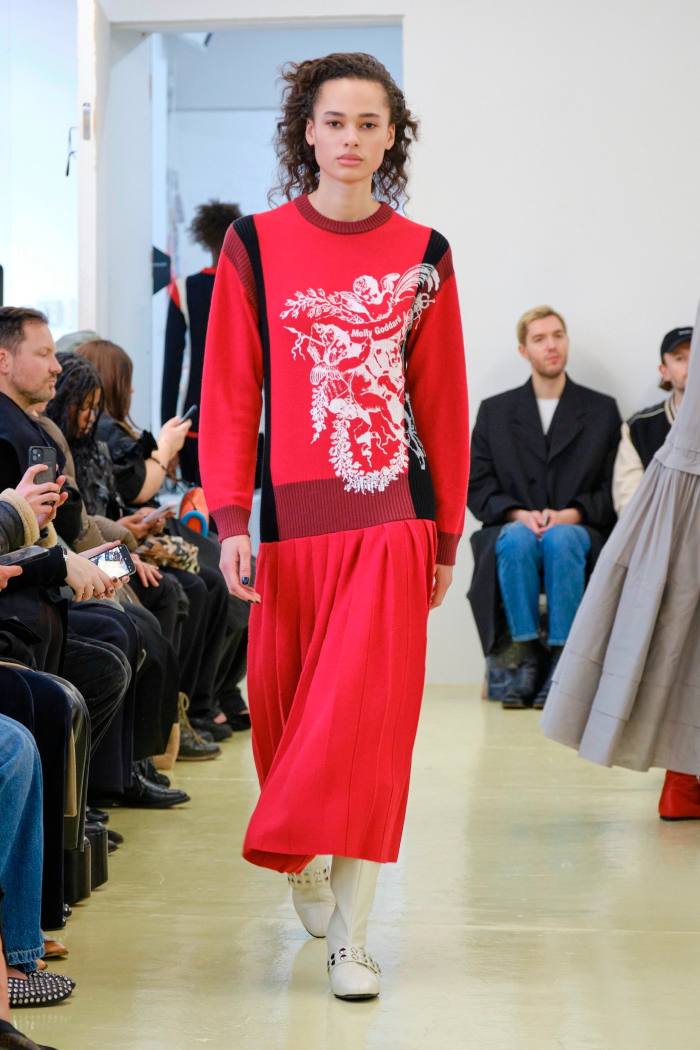

“Pared down” was how Emilia Wickstead described her first live catwalk show since the start of the pandemic, unveiled in front of just a few dozen guests at the Royal Academy. The interiors and insouciant outfits in David Lynch’s 1990 TV series Twin Peaks inspired the show’s “slapped-on” lipstick, lumberjack-check jackets and crushed satin dresses, she said.
Her enveloping wool coats and handsome V-neck jumpers, tucked into full skirts, had a cosiness and casualness that made them appealing for the office, something Wickstead said her customers are increasingly seeking from her. “As a brand, we are a lot more focused on separates,” she said.
16Arlington, a label also known for its evening dresses, likewise broadened its daywear offer with thin, slouchy knits, croc-embossed leather jackets and pencil skirts in ice blue.

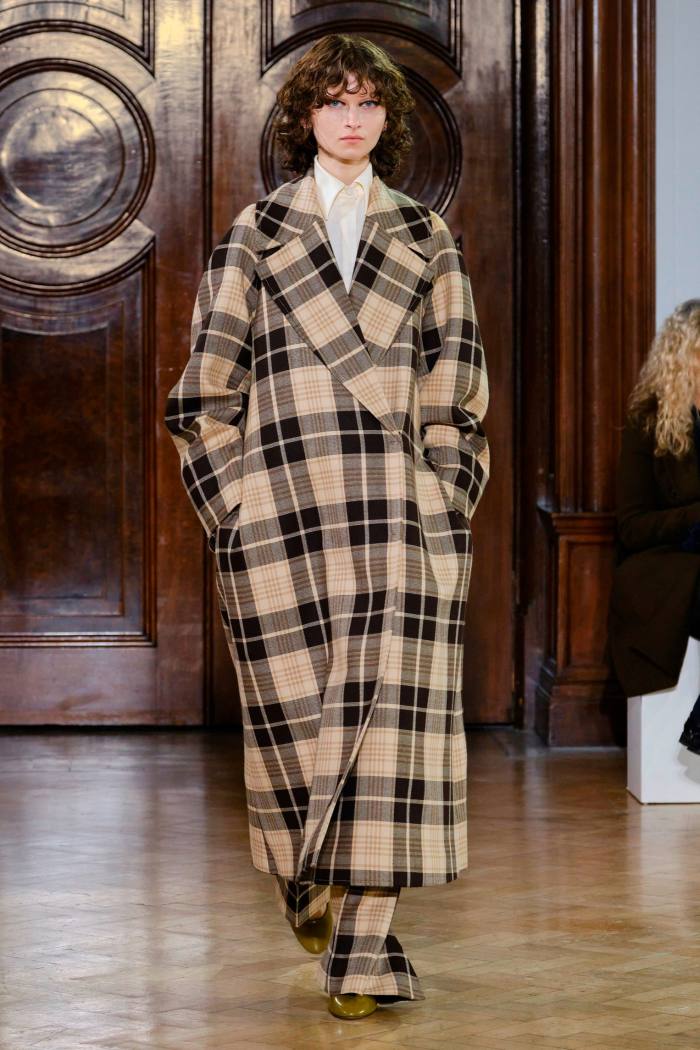
Those collections, and the small but elegant show that Roksanda Ilinčić hosted at Claridge’s, were a departure from the recent haute couture shows in Paris, where designers employed a mix of surrealism, opulence and fantasy to woo fashion’s top spenders.
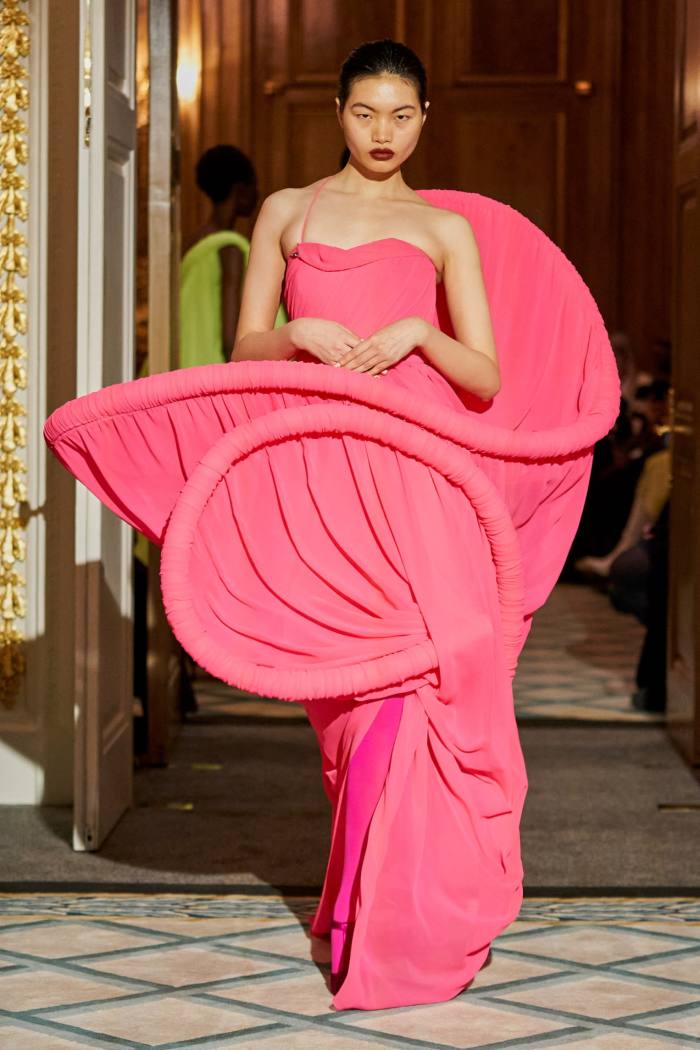

Irish designer Simone Rocha, whose shows often lean towards the fantastical, said she wanted her collection to “feel really grounded, from the earth”. She took inspiration from west Ireland’s hay festivals, inviting Dublin folk music group Lankum to play a set and stuffing delicately embroidered tulle dresses with dried raffia. It looked a bit grand under the dome of Westminister’s Central Hall, but the admirably age-diverse cast of models again kept it grounded.

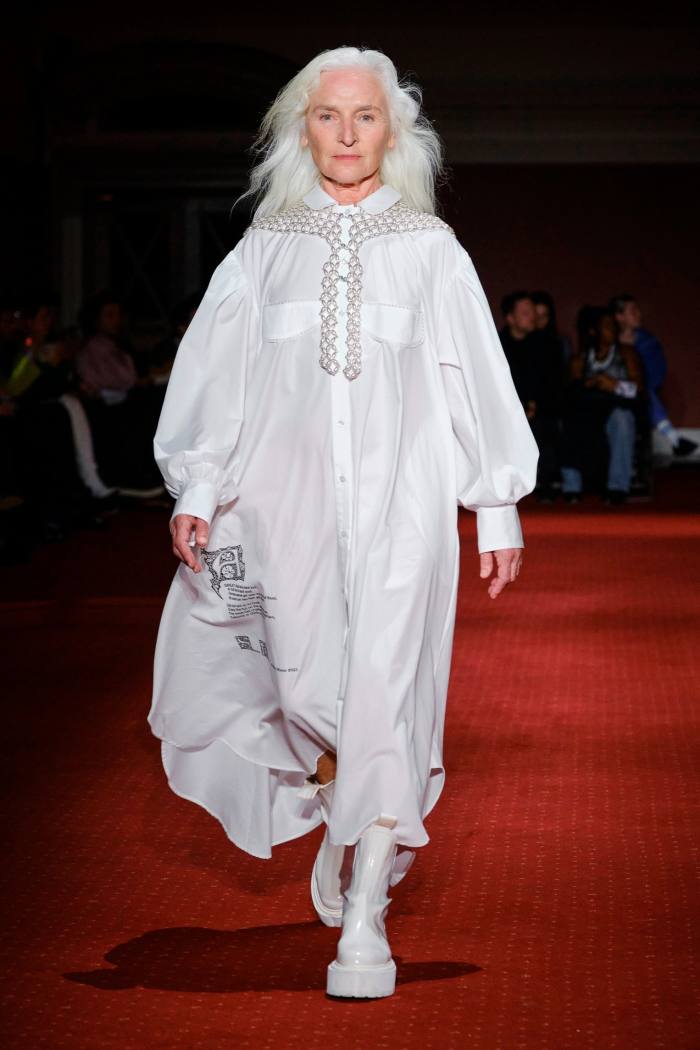
Like Rocha, Erdem Moralıoğlu stayed close to home — figuratively and literally. Figuratively, in that his focus remained firmly on the graceful, historically inspired evening dresses his customers have come to him for for more than 15 years; and literally, in that the collection was inspired by the terraced Georgian house he acquired in London’s Bloomsbury neighbourhood a couple of years ago.
Backstage, Moralıoğlu said he recently learnt that his house had once been a “home for fallen women”. They, the absinthe-green paint uncovered during renovations and a clutch of nude drawings found in a fireplace inspired the collection of gigot-sleeve lingerie dresses and crumpled-silk evening frocks embroidered with black irises. In spite of their Victorian references, the clothes were firmly contemporary — the output of a designer confident in his aesthetic codes.
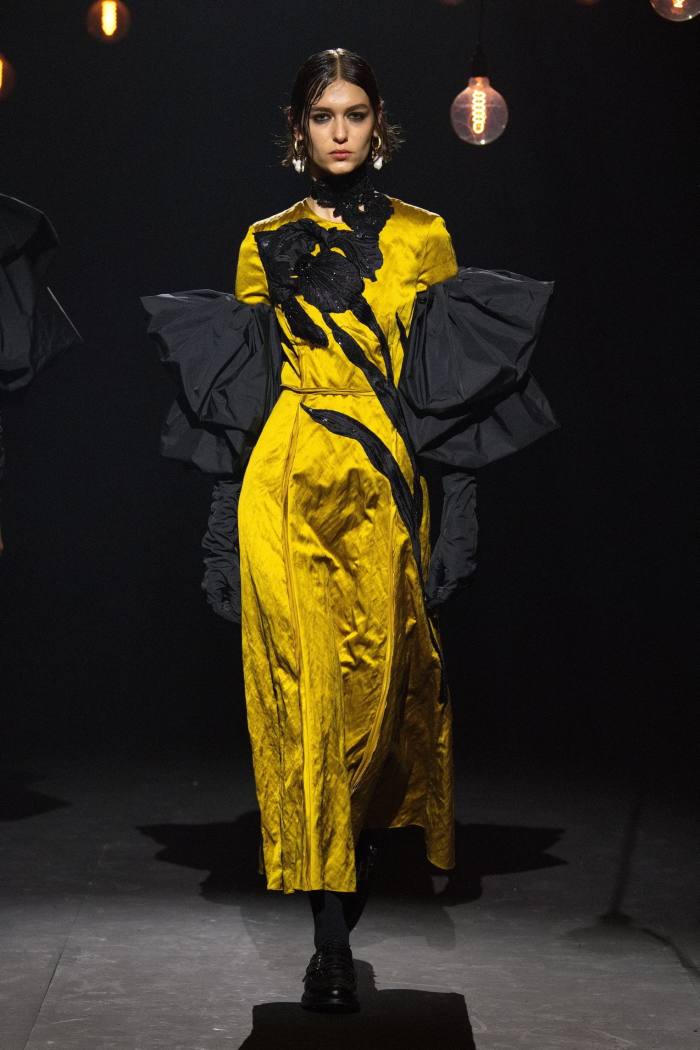
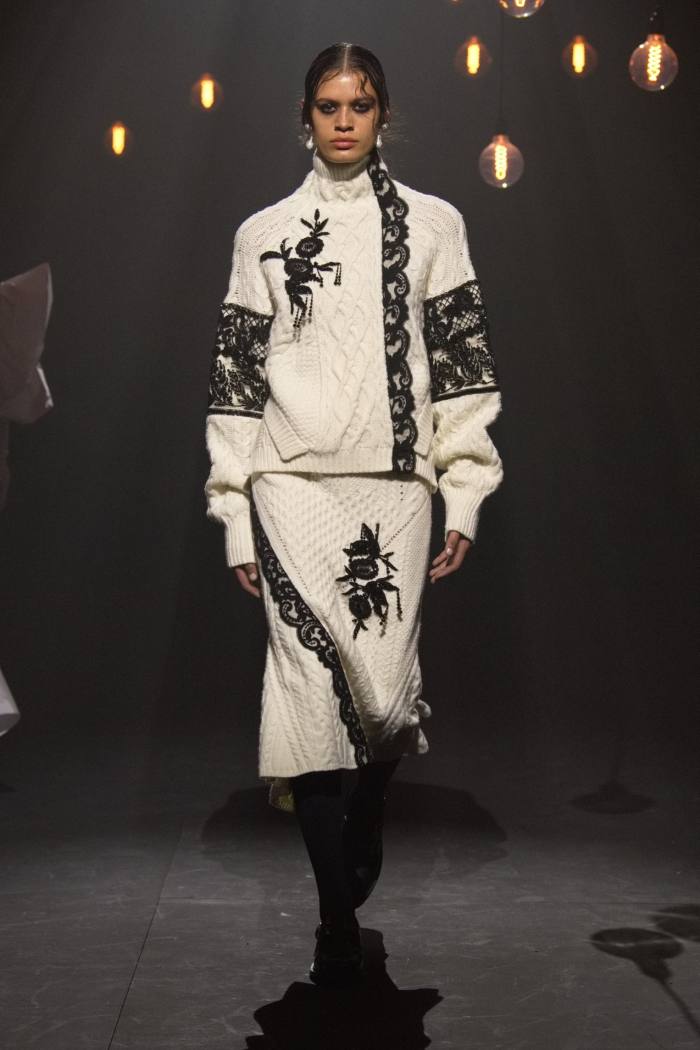
Irish designer Jonathan Anderson has that kind of confidence in spades. He teamed up with the Scottish dance choreographer Michael Clark, steeping himself in the archives both of Clark — including one poster memorably illustrated with a phallus, which was transferred to a crumpled shirt and trousers — and his own 15-year-old namesake label. Past hits, including furry going-out tops with front pouches, coats with enormous leather lapels, and origami-fold tops and trousers were reworked, refined.
“When I see old things [I’ve done], I usually hate them, so it was nice to improve on them,” Anderson joked afterwards. It was all very wearable, full of things — such as a frayed glen-plaid coat and slip-on sneakers slicked in crackled green lacquer — which the audience appeared eager to buy.
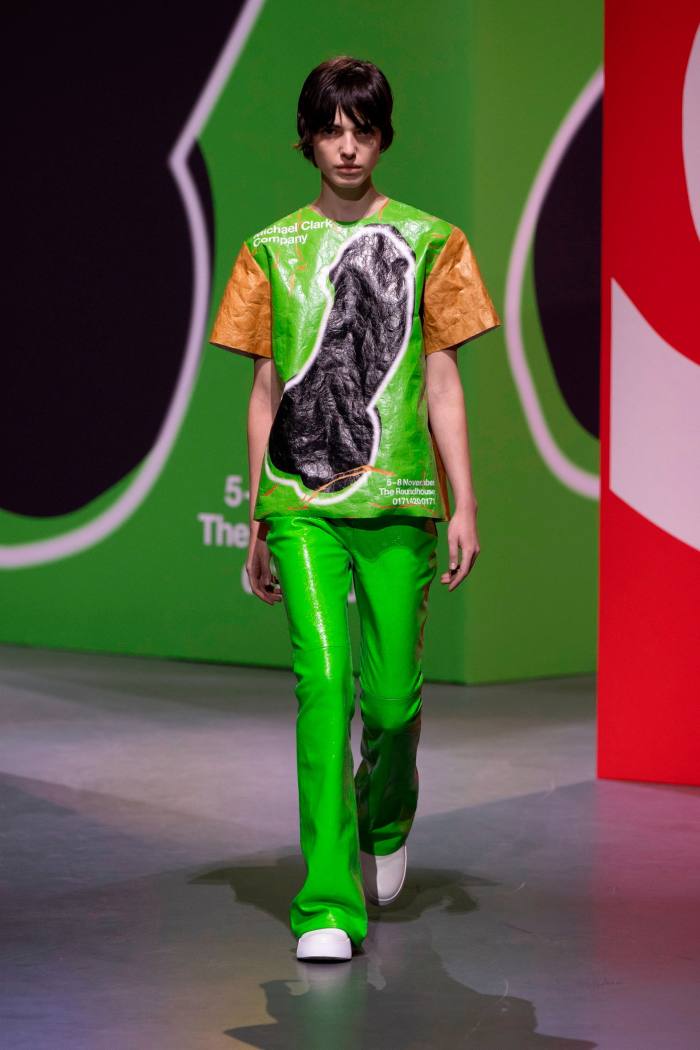

Christopher Kane is a designer whose clothes consistently manage to be both wearable and surprising — aided by an eclectic set of references that this season included intestines, 1980s Scotland, waitresses, chopping boards and “working-class” animals including piglets and rats, he said.
The photorealistic images of animals were made using AI image generators and printed on to long, slim mock-neck jersey dresses with slits high enough to reveal the models’ bottoms as they walked. Intestines were translated into bustles that unravelled over the hips of charcoal-grey trouser suits and a red PVC minidress, made still more interesting by the flat, stand-up collars (inspired by the chopping boards) that framed the face and lengthened the silhouette.

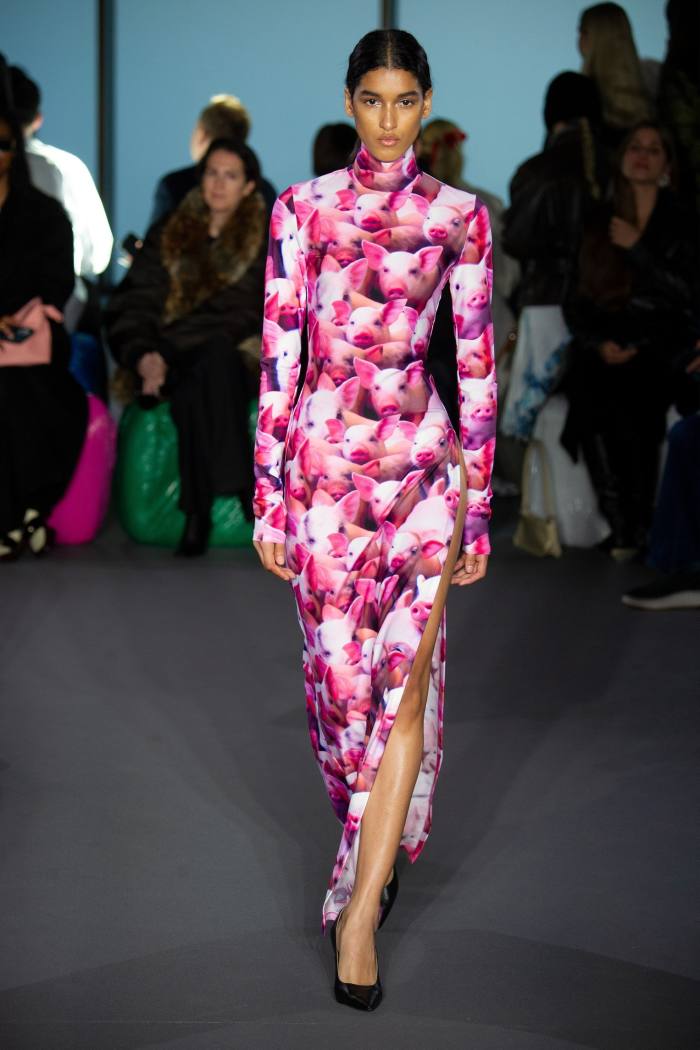
Not every designer was bent on paring back. Ian McKellen opened 2022 LVMH Prize winner Steven Stokey-Daley’s lovely show with a thunderous reading of Tennyson, days after fellow actor Florence Pugh performed a monologue for (and written by) Harris Reed, who used 108 metres of discarded gold lamé as the starting point for his theatrical, Schiaparelli-ish red-carpet dresses.

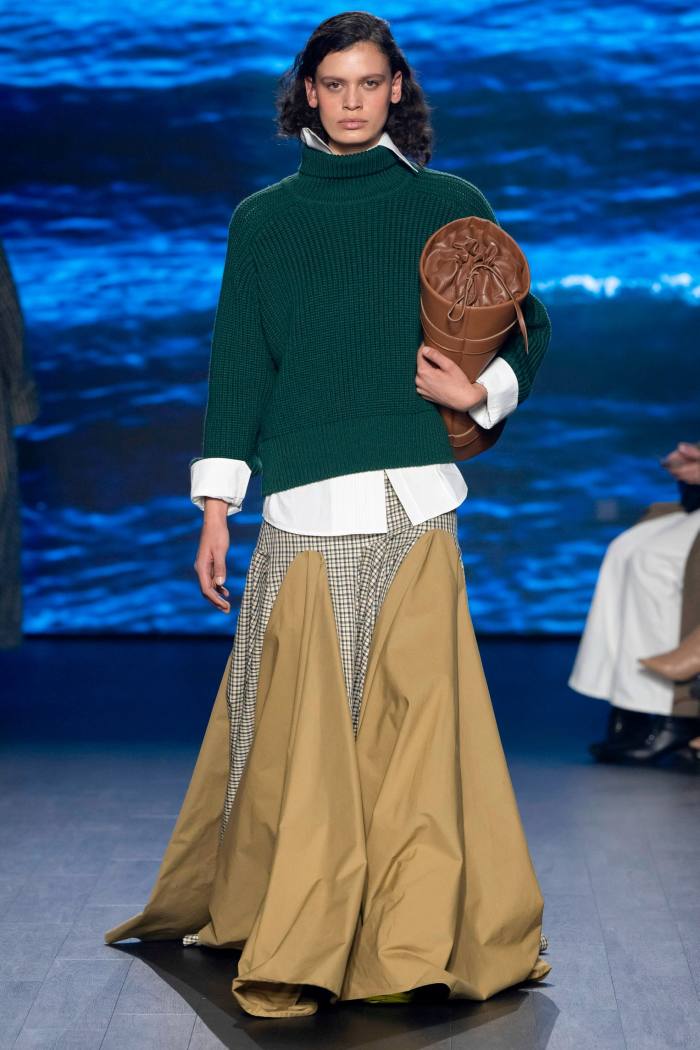
There was a great energy, too, at Priya Ahluwalia, where models walked to a soundtrack of Lauryn Hill and Tupac in body-hugging dresses with ruffled collars and cuffs (for women) and tracksuits and tailored suits (for men) made youthful — and distinctly Ahluwalia — with their colourful bands snaking across jackets and down the sides of trousers. Ahluwalia is still a relative newcomer to womenswear, and her offering there is not yet as developed or desirable as the menswear.
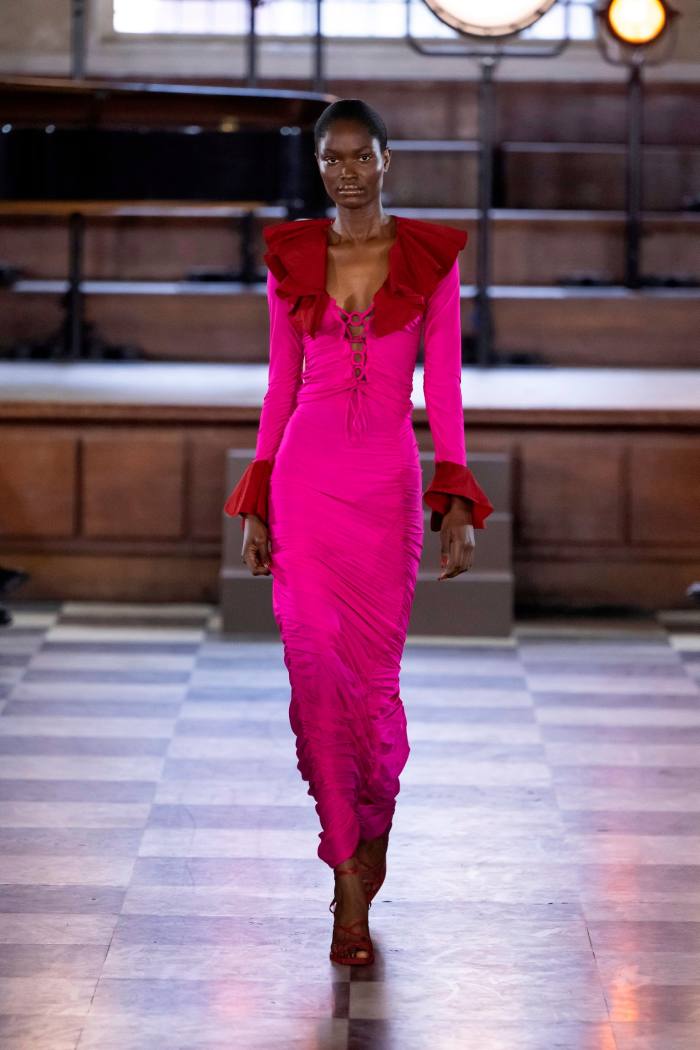

Yet she has a good instinct for branding, and the recurring “A” in zebra-print belts and silky co-ords felt cool rather than obnoxious. That, and the savvy expansion of her label into new categories such as shoes, is what makes her a designer to watch — and another breath of fresh air.
Stay connected with us on social media platform for instant update click here to join our Twitter, & Facebook
We are now on Telegram. Click here to join our channel (@TechiUpdate) and stay updated with the latest Technology headlines.
For all the latest Fashion News Click Here
